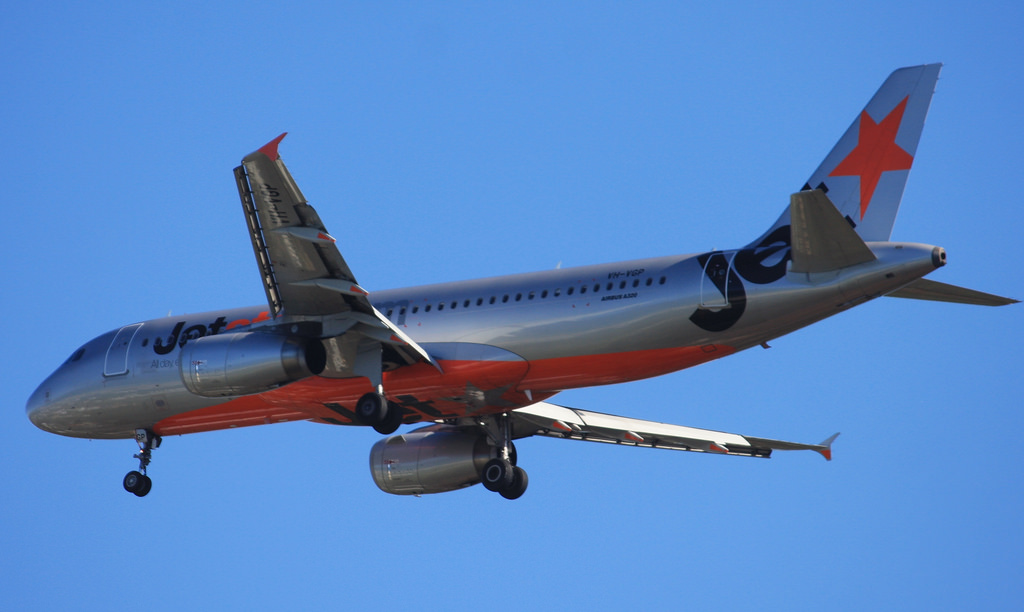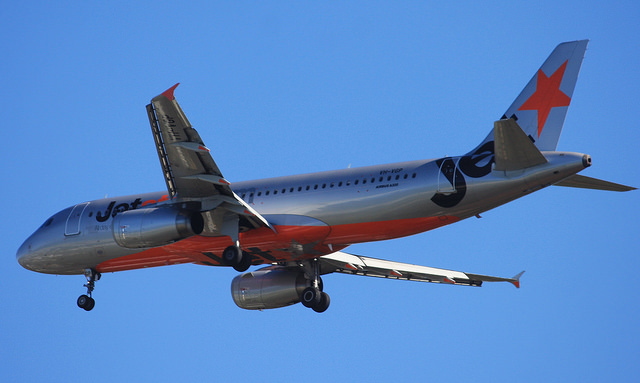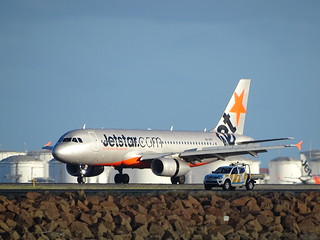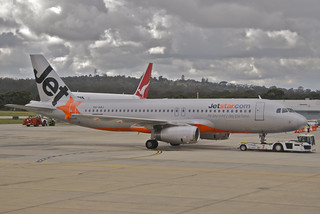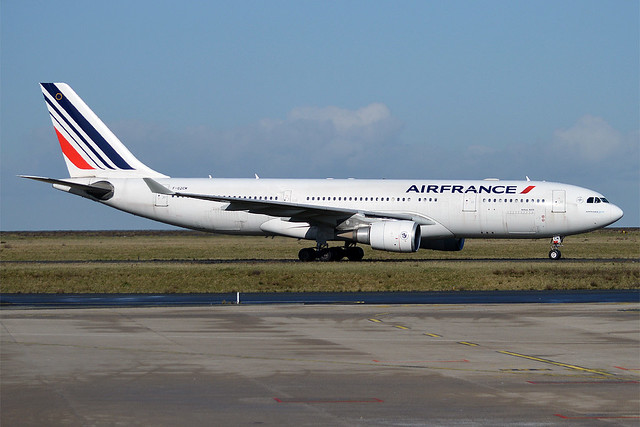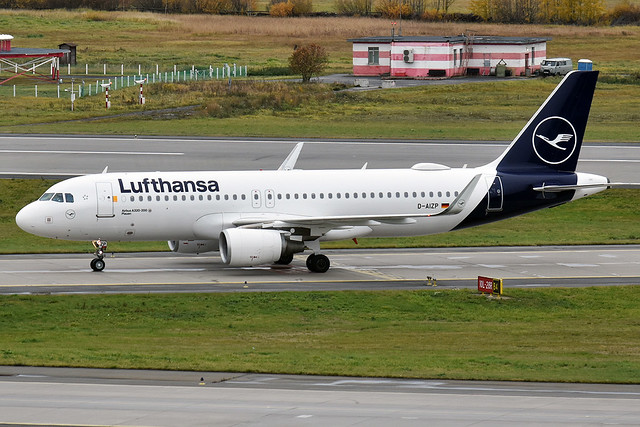Jetstar A320 at Ballina on Nov 28th 2020, near collision with private aircraft
Last Update: March 28, 2022 / 14:53:51 GMT/Zulu time
Incident Facts
Date of incident
Nov 28, 2020
Classification
Incident
Airline
Jetstar Airways
Flight number
JQ-464
Departure
Melbourne, Australia
Destination
Ballina, Australia
Aircraft Registration
VH-VGP
Aircraft Type
Airbus A320
ICAO Type Designator
A320
A private Jabiru J230D aircraft was enroute from Heck Field,QL to Evans Head,NS (Australia) at about 5200 feet MSL about 4nm east of Lismore and made a broadcast to Lismore CTAF. The call however was not heard by the Jetstar crew. The aircraft subsequently began to descend towards Evans Head. The flight crew had activated the transponder (ON), however, had not engaged the transponder in ALT mode, the transponder thus did not transmit any altitude information and thus disabled any TCAS resolution advisory of other aircraft with respect to the private aircraft.
The A320 made another CTAF broadcast that they had just passed OPESO waypoint, however, the Jabiru pilot did not hear that call.
The flight pathes of both aircraft intersected at approximately 12nm southwest of Ballina. The A320 received a TCAS Traffic Advisory shortly before passing OPESO showing the conflicting traffic at about their 11 o'clock position, the A320 crew began to look out for the conflicting traffic without success. Just before the A320 had passed underneath the Jabiru, the crew sighted the Jabiru above but could not react. Immediately after the Jabiru had overflown the Jetstar A320, the Jabiru crew sighted the A320 below them.
Both aircraft continued to their destinations, the Jetstar landed on Ballina's runway 06 a few minutes later, the Jabiru landed at Evans Head.
On Mar 1st 2021 the ATSB released their preliminary report stating that according to the quick access recorder of the A320 and the OzRunways program used by the Jabiru pilot the trajectories intersected about 12nm southwest of Ballina with a vertical separation of 600 feet. Both crews reported there was no lateral separation remaining. The ATSB investigation continues.
On Mar 26th 2022 the ATSB released their final report concluding the probable causes of the incident were (emphasis by ATSB):
Contributing factors
- The mode of the transponder on board 24-7456 was not selected to transmit altitude data, which resulted in VH-VGP’s traffic collision avoidance system (TCAS) not indicating the approaching aircraft’s altitude or providing a resolution advisory.
- The pilot of 24-7456 did not recall hearing broadcasts from VH-VGP and remained unaware of the other aircraft until passing above it.
- The flight crew of VH-VGP did not recall hearing the broadcast from 24-7456 when it was near Lismore and remained unaware of the aircraft until receiving a TCAS alert. However, they did not know the approaching aircraft’s altitude, did not attempt to make radio contact and only sighted it moments before the aircraft passed.
- The vertical separation between the aircraft when their flight paths inadvertently intersected reduced to about 600 ft, which was entirely fortuitous as the pilots of neither aircraft had been able to manage aircraft separation in the circumstances.
Other factors that increased risk
- The Civil Aviation Safety Authority review and periodic risk assessments of the airspace surrounding Ballina Byron Gateway Airport did not include data for aircraft transiting the airspace without using the airport. Therefore, the risk associated with occurrences such as this one were not specifically considered when assessing the appropriate airspace classification. (Safety issue)
The ATSB analysed:
On 28 November 2020, the flights paths of Airbus A320, VH-VGP, and Jabiru J230D, 24-7456, intersected about 12 NM south west of Ballina Byron Gateway Airport, with the vertical separation between them reducing to about 600 ft. The aircraft were outside the airport’s broadcast area and within non-controlled Class G airspace. That meant that the pilots were responsible for safe separation using radio communications and collision avoidance aids to support ‘see-and-avoid’ practices.
Communications and collision avoidance aids
The flight crew of VGP did not recall hearing the broadcast from 7456 prefixed with ‘Lismore traffic’ on the common traffic advisory frequency (CTAF). That prefix (a different airport to their destination, Ballina) probably did not trigger their auditory attention. In any case, they were not aware of 7456 until alerted to a conflict by the aircraft’s traffic collision avoidance system (TCAS).
Similarly, the pilot of 7456 did not recall hearing broadcasts from VGP on the CTAF. Additionally, the pilot was not familiar with phraseology commonly used in passenger transport operations, including reference to instrument approach waypoints such as OPESO. That probably contributed to the pilot not registering those broadcasts and being unaware of the presence of VGP before the incident.
The pilot of 7456 incorrectly selected mode 3A (instead of the required 3C) on the aircraft’s transponder resulting in altitude data not being transmitted. As the aircraft approached VGP, its TCAS issued the conflict alert and, subsequently, a traffic advisory alert with the relative bearing and distance of 7456. However, the TCAS could not indicate the approaching aircraft’s altitude or provide a resolution advisory, significantly disadvantaging the flight crew in managing the situation.
See-and-avoid
The circumstances and the restrictions imposed on the available electronic aids, particularly TCAS functionality, were impediments to effectively applying see-and-avoid practices.
Since the pilot of 7456 was not aware of VGP, seeing and avoiding it depended on the success of ‘unalerted’ visual searches by the pilot. Although visibility was greater than 10 km with no cloud in the area, any searches were unsuccessful as the pilot only sighted VGP after passing above it.
On the other hand, VGP’s TCAS alerted the flight crew to 7456. However, their ‘alerted’ search was unsuccessful in part due to the limitations associated with the human visual system and the absence of altitude data. Additionally, the effects of cognitive tunnelling, together with the rapid sequence of events following the TCAS alerts, possibly resulted in them not considering options such as contacting the approaching aircraft via radio on the CTAF. With no TCAS resolution advisory manoeuvre available, they continued visually searching, sighting 7456 moments before it passed and too late to take any action to avoid a potential collision.
Therefore, the vertical separation of about 600 ft when the aircraft passed was entirely fortuitous.
This incident, together with previous events involving transiting aircraft shows that separation occurrences, with potentially serious consequences, can and do occur in the airspace encompassing the approach and departure flight paths of large transport aircraft operating at Ballina Airport.
Airspace classification
The objective of the 2015 Civil Aviation Safety Authority (CASA) review of the airspace surrounding Ballina Byron Gateway Airport was to assess the level of risk posed to passenger transport services and determine if the airspace classification was appropriate. The review considered total aircraft movements (including passenger transport aircraft) at the airport, some reportable events near the airport and stakeholder feedback and determined that a Class D or higher airspace classification was not appropriate. Significantly, transiting aircraft movements were not considered, primarily due to difficulty in extracting this data.
However, the review had not specifically considered the risks associated with aircraft transiting the airspace without taking off or landing at Ballina Airport. Recognising that such a consideration at the time of the review would have only identified 2 occurrences associated with transiting aircraft, additional occurrences in the intervening years indicate that the risk of a proximity event in these circumstances may be significant. However, opportunities to consider such risk events in the periodic risk assessments of the airspace since the 2015 review had not been taken.
Capturing these tangible risks through the airspace review and periodic assessment mechanisms would result in a more accurate and realistic risk assessment. Such a risk assessment would, in turn, better inform an assessment of the appropriate airspace classification.
When operating in non-controlled airspace (such as the current Class G airspace around Ballina), whether under the instrument or visual flight rules, pilots hold responsibility for separation from other aircraft. A review of past occurrences indicates that self-separation using broadcast traffic advice has been a largely reliable procedure.
The ATSB does however note that the effectiveness of the current pilot-separation method relies on individual pilots:
- recognising a potentially unsafe situation
- formulating an effective separation plan that often requires coordination with the occupants of the other involved aircraft.
While on this occasion one of the involved aircraft was equipped with TCAS, this process is almost exclusively reliant on individual human actions without other mechanisms potentially acting as a safeguard and/or safety redundancy, and as such subject to human error, even when it involves experienced pilots. Furthermore, such errors often increase under high workload associated with, for example, instrument flying approach procedures, low experience or a busy airspace environment.
Of note, the airspace surrounding Ballina Airport accommodates a complex mix of aircraft types and operations, including high capacity passenger transport, while also being located close to several other non-controlled airports.
In that context, while the available evidence in this investigation does not support a conclusion that the present self-separation system is unsafe, there is an opportunity to potentially reduce safety risk further.
The ATSB therefore supports systemic enhancements to the overall air traffic system that have been assessed by regulatory and air traffic specialists, in keeping with their obligations as providing a net overall safety increase. Key examples of such enhancements include:
- the increased use of controlled airspace and ADS-B aircraft surveillance data (both by air traffic services and in-cockpit)
- improved monitoring of air traffic movements (both quantity and complexity) to assist the identification of increasing risk areas.
With respect to this occurrence, had the aircraft been operating in controlled airspace the crew of VGP would have, at a minimum, received traffic information from air traffic control on 7456 and may have been positively separated.
Incident Facts
Date of incident
Nov 28, 2020
Classification
Incident
Airline
Jetstar Airways
Flight number
JQ-464
Departure
Melbourne, Australia
Destination
Ballina, Australia
Aircraft Registration
VH-VGP
Aircraft Type
Airbus A320
ICAO Type Designator
A320
This article is published under license from Avherald.com. © of text by Avherald.com.
Article source
You can read 2 more free articles without a subscription.
Subscribe now and continue reading without any limits!
Read unlimited articles and receive our daily update briefing. Gain better insights into what is happening in commercial aviation safety.
Send tip
Support AeroInside by sending a small tip amount.
Related articles
Jetstar A320 at Darwin on Feb 16th 2016, haze in cabin
A Jetstar Airbus A320-200, registration VH-VGP performing flight JQ-677 from Darwin,NT to Melbourne,VI (Australia), was climbing through FL200 out of…
Jetstar A320 at Hervey Bay on Aug 11th 2025, unstable approach due to PAPIs
A Jetstar Airbus A320-200, registration VH-VQL performing flight JQ-890 from Sydney,NS to Hervey Bay,QL (Australia), was on final approach to Hervey…
Jetstar B788 at Sydney on Nov 27th 2024, tyre damage on departure
A Jetstar Boeing 787-8, registration VH-VKH performing flight JQ-27 from Sydney,NS (Australia) to Phuket (Thailand), was climbing out of Sydney's…
Jetstar A321 near Sydney on Sep 11th 2024, electrical problems
A Jetstar Airbus A321-200, registration VH-VWW performing flight JQ-941 from Cairns,QL to Melbourne,VI (Australia), was enroute at FL330 about 280nm…
Jetstar A320 at Christchurch on May 31st 2024, temporary runway excursion on landing
An Jetstar Airbus A320-200, registration VH-VFF performing flight JQ-225 from Auckland to Christchurch (New Zealand), landed on Christchurch's runway…
Jetstar A320 at Melbourne on Mar 16th 2024, rejected takeoff due to open communication hatch
A Jetstar Airbus A320-200, registration VH-VQJ performing flight JQ-739 from Melbourne,VI to Launceston,TA (Australia), was accelerating for takeoff…
Newest articles
France A332 near Munich on Jan 4th 2026, toxic fumes on board
An Air France Airbus A330-200, registration F-GZCM performing flight AF-565 from Beirut (Lebanon) to Paris Charles de Gaulle (France), was enroute at…
Lufthansa A320 at Cluj on Jan 4th 2026, bird strike
A Lufthansa Airbus A320-200, registration D-AIZP performing flight LH-1668 from Munich (Germany) to Cluj (Romania), was on final approach to Cluj's…
Subscribe today
Are you researching aviation incidents? Get access to AeroInside Insights, unlimited read access and receive the daily newsletter.
Pick your plan and subscribePartner

ELITE Simulation Solutions is a leading global provider of Flight Simulation Training Devices, IFR training software as well as flight controls and related services. Find out more.
SafetyScan Pro provides streamlined access to thousands of aviation accident reports. Tailored for your safety management efforts. Book your demo today
AeroInside Blog
Popular aircraft
Airbus A320Boeing 737-800
Boeing 737-800 MAX
Popular airlines
American AirlinesUnited
Delta
Air Canada
Lufthansa
British Airways
